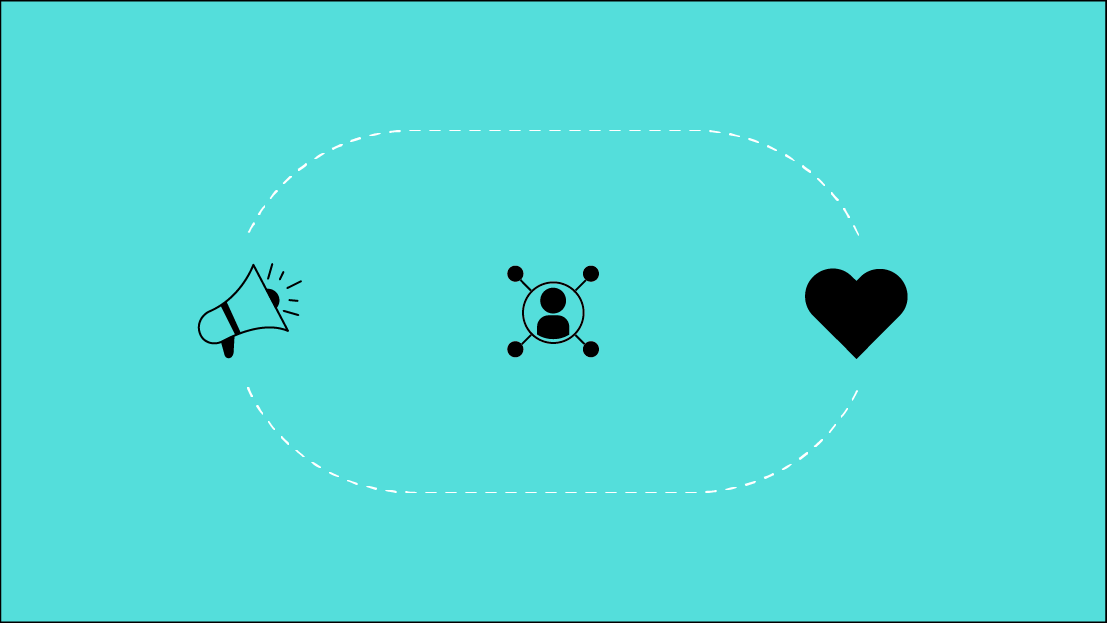In 2014, digital advertising can have so many meanings to so many different people, companies and agencies. Regardless of what it means to you, it is extremely powerful. I could be a little biased considering I work at SEER, a digital agency, but online marketing may be the most important investment, other than in employees, your business can make. It closes the loop between your message and your customers. This blog is meant to show you several ways digital advertising can supplement (or be the foundation) for all of your advertising initiatives.
Gettin’ Social: Twitter and TV
Referencing an article written by Martin Beck of Marketing Land, a study was done by Twitter showing the amazing benefits a business can receive by combining Twitter with TV advertising. The short message Twitter wants to push on advertisers is this combo “results in strong gains in brand awareness, TV ad recall, engagement with television shows and sales lift”. A couple main takeaways from the article:
- An average of a 6.9% increase in brand awareness occurred when Twitter was added to TV compared to just TV alone
- In addition to an increase in brand awareness, sales also increased by 4% on average
- TV ad recall was 13% higher among Twitter users
- Twitter has real time TV content engagement
Recommendation: The world truly has adopted a multi-screen lifestyle and people are able to multi-task better than ever. So next time your business is planning some TV commercials, think how you can create a discussion with users on Twitter. A simple but catchy hashtag could be all you need to really get the conversation started and organically (and cheaply) increase brand awareness and even sales!
Radio and Sponsored Ads For The Win!
Now I know what you are thinking. That was some fancy-shmancy study done by Twitter and you want to see to see some real data in action. Welcome Client X, an actual Client at SEER (whose name will not be released for confidentiality purposes). Client X decided to run with some radio advertising in conjunction with their PPC campaign at SEER. Here is their schedule (in 2013):
- Radio from 6/3 - 6/13
- July no radio
- Radio from 7/29 – 8/14
- September no radio
- Radio from 10/2 – 10/13
- November no radio
Below are 4 graphs showing a month by month break down in clicks, conversions and a month over month change.
*The campaign started mid-June which is why June/July numbers seem so skewed. Both months were removed from “change” graphs for this reason.
As expected with clicks, there is a clear trend up and to the right. The campaign as a whole is gaining more traction as the history on Google is built. The combination of this and August’s radio ads generated a strong effect on click volume as it received 124% of clicks it did in July. Also, take notice of the immediate drop off from October to November when radio advertising was complete.
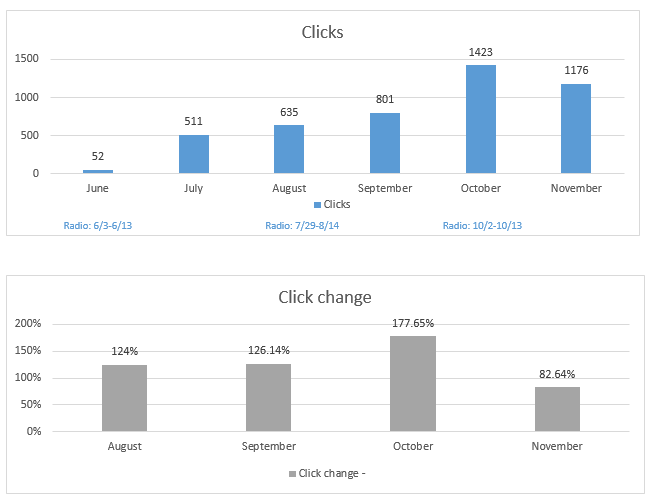
Conversions are showing similar numbers (August received 107% of July conversions). However, the radio advertising in October clearly had a dramatic effect on their digital advertising. October received 178% of clicks and 150% of the conversions that September received. While I am unsure of the messaging and distribution of the radio ads, it is apparent the lyrics in the October ads had a huge effect on this PPC campaign.
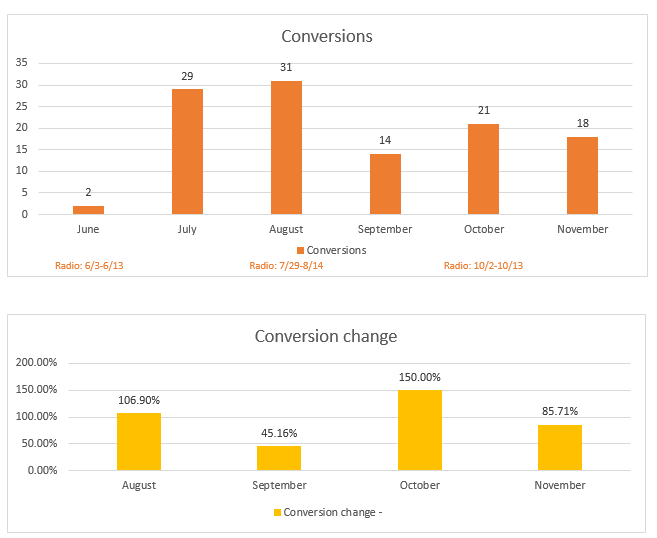
Recommendation: While this obviously is a small sampling, there were clear benefits to having a strong online presence during radio ad sessions. Try to make messaging congruent between all marketing initiatives. Consistent language and value propositions increase the chance of turning offline media endeavors into online/digital conversions. In the case of PPC advertising, consider increasing your exposure and impression share during radio sessions and even a week or 2 after to capitalize on increased awareness.
Traffic, Traffic, Traffic!
Yet another client at SEER rendered similar results when comparing sponsored clicks and conversions during offline media sessions. However, instead of focusing on conversions, we are going to take a look at trends in regards to organic traffic. Here are a couple notes in regards to Client Y.
- TV advertising started the week of September 29th for about a month
- Radio was added in the week of October 23rd and lasted through November
- Billboards were also used. Exact time frame is unknown but were being used during a similar time frame as TV and radio
So let’s check organic traffic by the month.
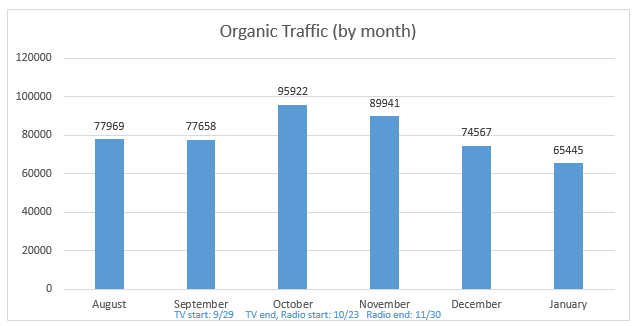
It is visually obvious that there was an increase in organic traffic to Client Y’s website during the advertising periods. Still not convinced though, maybe a more granular approach will help….
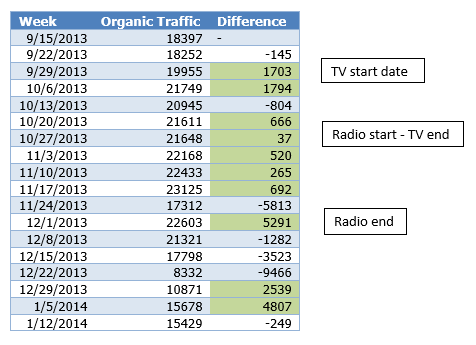
- TV start date- Very clear and immediate increase in organic traffic
o Traffic continued to increase every week TV ads ran except for one
o “Down” week still had 2693 more visits than before TV
- Radio start date- Again, organic traffic decreased only one week
o All other weeks saw increase in traffic
- All offline media complete-
o December: traffic takes a huge dip. Holidays could have effect
o January: leveled off around 15000+ which is significantly lower than during offline media push
Recommendation: Exposure on the SERPs is important whether we are referring to sponsored ads or the organic section. Make sure you are engaged in proper SEO techniques to capitalize on your offline efforts. This is something that will need to be done consistently though. Site changes and SEO techniques cannot have an immediate effect on your ranking and exposure so this should be a constant endeavor from your marketing team.
Time, Money and Energy
It is clear today’s consumers are going to the internet to find the info, brands, products, services, etc. that they need on a daily basis. If you plan to grow your business, exploration of the digital marketing space could be the stepping stone you need. Notice however, nowhere in this blog did I mention digital advertising is easy or simple. It takes constant monitoring and adjustments to make sure your digital advertising dollars are providing your business ROI. However, there are countless tools online (and being developed) to assist in your strategies and increase efficient use of your time and resources. Tools such as Google Trends can show you what search terms are being (and are forecasted to be) searched the most in certain geographies. Consumer barometer provides invaluable insight to how consumers are using the internet and offline resources during the purchasing process. Using these tools is a great way to ensure both offline and online advertising efforts are in line with your overall marketing strategy. 

